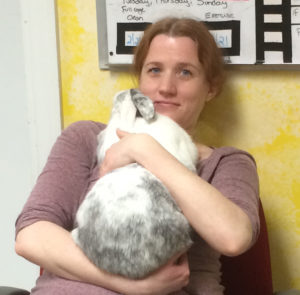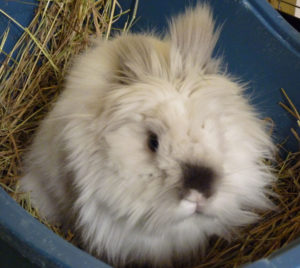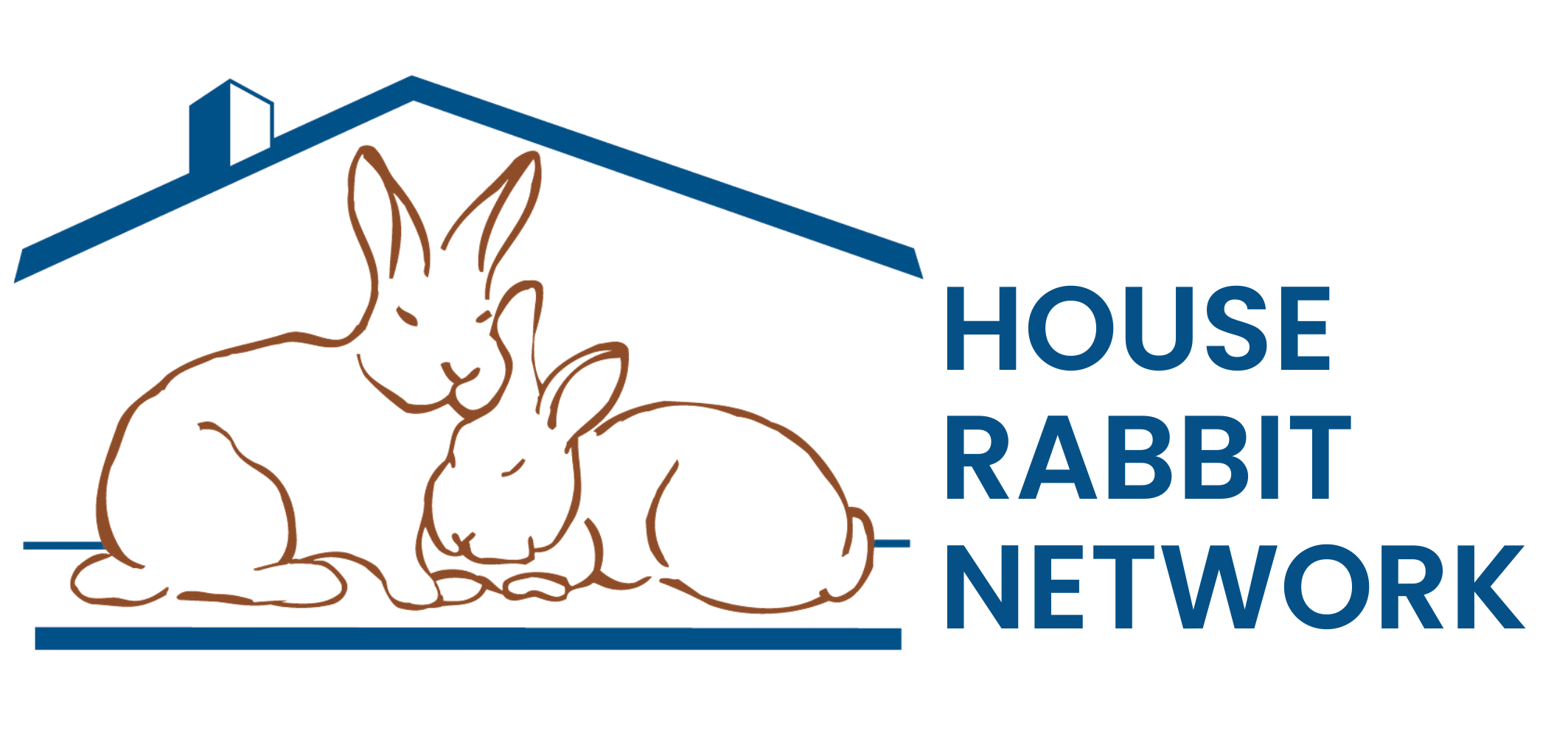Choosing the Right Rabbit for You
 So you’re thinking about adding a rabbit to your family? It’s important that you choose a bun that will fit well into your family and your lifestyle. Every bunny is unique, but there are some general guidelines that might give you insight into picking the best bun for your home. Keep in mind that every rabbit has such a distinct personality, that any generalization we mention might not hold true for the buns you meet.
So you’re thinking about adding a rabbit to your family? It’s important that you choose a bun that will fit well into your family and your lifestyle. Every bunny is unique, but there are some general guidelines that might give you insight into picking the best bun for your home. Keep in mind that every rabbit has such a distinct personality, that any generalization we mention might not hold true for the buns you meet.
Male vs. Female
Let’s face it, rabbits that aren’t spayed/neutered tend to have only one thing on their mind—the drive to mate. To reduce behavioral problems, aggression, and urine marking, it’s important to have rabbits neutered/spayed. Spaying is also important since 60% of female rabbits develop uterine cancer by the age of four if they haven’t been spayed. Spayed/neutered rabbits can live 8-12 years.
After rabbits are altered, their own personalities come out, and they will be calmer and more loving. Is there any personality difference between a male and female bun? Some people think that males tend to be slightly more outgoing than females.
What Size and Breed?
 The American Rabbit Breeder’s Association recognizes 49 unique rabbit breeds, and they come in several sizes: dwarf, small/medium, large, and giant. Common sizes of rabbits tend to be from 2.5 lbs to 12 lbs. Larger rabbits tend to be more laid back and may have slightly shorter lifespans than dwarf rabbits. We recommend larger buns for households with cats that might have some hunting instincts, and also for families with small children, since small children are less likely to try to pick up bigger buns.
The American Rabbit Breeder’s Association recognizes 49 unique rabbit breeds, and they come in several sizes: dwarf, small/medium, large, and giant. Common sizes of rabbits tend to be from 2.5 lbs to 12 lbs. Larger rabbits tend to be more laid back and may have slightly shorter lifespans than dwarf rabbits. We recommend larger buns for households with cats that might have some hunting instincts, and also for families with small children, since small children are less likely to try to pick up bigger buns.
Long-haired rabbits such as Angoras or Lionheads need more grooming. Angoras need more protein in their diet. Dwarf, Lop eared, and Lionhead rabbits are more prone to eye and teeth problems which can be costly. Dwarf breeds also might be more highly strung and need careful handling.
What Age?
The age of a rabbit significantly affects their behavior. Are you looking for an extremely active companion or would you prefer a more laid back one? The behavior we outline by age uses generalizations, so you will meet buns that don’t quite match the behavior of their age category as every bun is unique.
Babyhood (0-3 months old)
Rabbits typically become fully independent from their mother and are able to survive on their own by the time they are 8 weeks old, which is why rabbits should not be adopted before that time. HRN doesn’t adopt out buns until they are spayed/neutered, around 3-8 months depending on the sex of the bun, rate of growth, and certain biological factors. Sadly, many pet stores offer rabbits as young as four weeks old for sale. Some of those buns haven’t been properly weaned from their mothers and might have digestive issues.
Teenagers (6 months to 1 year)
Ah, the teenager. Buns become fully mature at this stage and might be a little moody. They are likely to be mischievous as they chew and dig everything in their paths. These furry teens are extremely active and full of energy.
Young Adulthood (1-3 years old)
Buns continue to be active, but a little less so than teenagers. They need lots of exercise and can often be caught “binkying” (jumping in the air and flicking their legs). They spend much of their time exercising and roaming around the house, and they still like to chew, dig, and explore. It’s best to keep them busy by giving them plenty of toys, chewsticks, boxes, etc.
Middle Age (3 – 5 years old)
At this age rabbits tend to slow down a little, sleep more, and generally be less active. They may also become more affectionate, particularly house rabbits who live closely with their owners. Their level of trust in their people has built up so that they feel completely safe and secure in their home and able to truly relax and take it easy.
Late Middle Age (5-7 years old)
Age-related health problems like arthritis may come their way, which can lower their level of mobility a little.
Old Age (7 years and older)
Many rabbits can still be quite active at this stage while others may slow down to the point where they will need a different litter tray or access routes through their enclosures, due to an inability or hesitation to hop or jump. A large number of rabbits at this age may deal with chronic illness and require regular medication and/or care. This often leads to an even more loving bond between rabbit and owner.
What Personality?
One personality trait to consider is how easy or difficult the rabbit is to handle, pick up, and hold. The truth is that most rabbits don’t like to be picked up, but even for those buns you still need to learn to handle them for taking trips to the vet, nail trims, etc. For fun, we’ve categorized some common bun personalities, but the reality is that you can find all personality types in all breeds, and rabbits can be a mix of several personality types.
The Youngins
These rabbits are overly curious and full of energy. They will race over to you and happily greet you whenever you enter the room. They will enjoy any kind of affection and openly show their joy by binkying around the room frequently. They are also more likely to chew, dig, and push their way into areas you tried to keep them out of and often feel the need to investigate the taste of the book or a wooden shelf. These rabbits enjoy new toys, games, and challenges and openly show their emotions.
The Carefree Bun
Nothing ruffles this dude’s fur. He’s happy and confident. His days consist of eating yummy food, cuddling with his peeps, and restful snoozing.
The Energizer
This bun speed races around trying to work off some energy. These buns can be fun to watch. If you’re busy and don’t have a lot of time for petting, having these buns to watch while you’re working can be quite entertaining.
The Divas
These rabbits rule the house. The only house rules are the ones the buns make. If they don’t like something, they will make it perfectly clear and will expect you to correct whatever terrible tragedy has befallen them. You can pet them, but only when they are in the mood. It can be quite interesting to see so much attitude in a cute ball of fluff.
The Explorer
Somehow this cheeky rabbit always seems to be in trouble. Whether scaling the bookcase or digging a hole to Australia, The Explorer just has to see more of life and won’t let anything stand in the way. Even outstanding rabbit proofing might not stop this rabbit.
The Shy vs. the Timid Bunny
Some bunnies are shy and need to get to know you before their personality really comes out. Then there are buns who tend to be timid. These rabbits are generally fearful, don’t easily warm up to humans, and scare very easily when there are noises. The timid bun does best in a quiet household without young children.
The Snuggler
This bun just wants to be cuddled and loved. Wherever there’s a person to rub him, he’ll be there…looking cute and adorable with eyes that say, “I’m yours. Please snuggle me.”
It’s important to find a bun who will fit well into your home and your life. One benefit of working with a rescue group is that the people there are very familiar with their rabbits and can help you choose a bun. They have spent time with the buns and learned their personalities, habits, etc. Keep in mind that rabbits will act differently around different people, so pay attention to how the bun is acting around you. The bottom line is that you’re the only one who can tell if you feel a special connection with a certain bun. Good luck in your search for a new family bun.
— Stacey Paiva
